SPECworkstation 3.0.2 Storage Benchmark
SPECworkstation benchmark is an excellent benchmark to test systems using workstation-type workloads. In this test, we only ran the Storage component, which is fifteen separate tests.
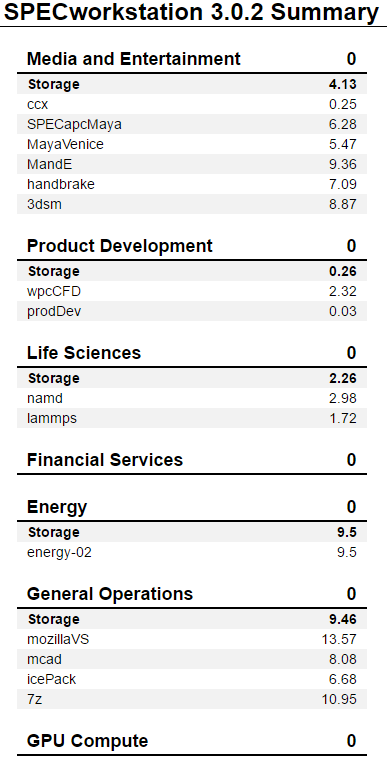
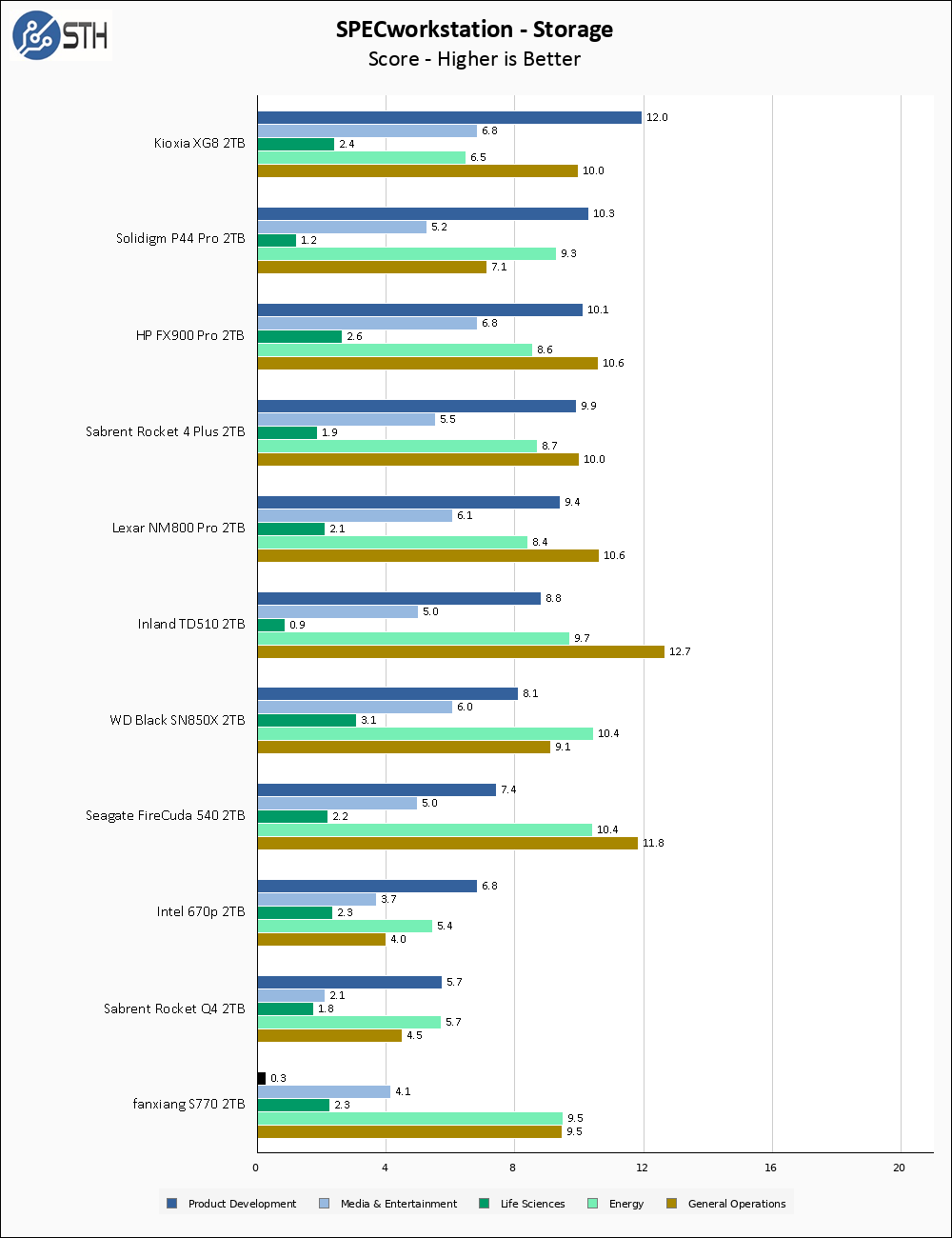
I do not know what to tell you about these SPECworkstation results; I repeated the test several times. Something about SPEC absolutely hates this drive for Product Development, while the rest of the results are basically fine.
Sustained Write Performance
This is not necessarily a benchmark so much as trying to catch the post-cache write speed of the drive. While I am filling the drive with data to the 85% mark with ten simultaneous write threads, I monitor the drive for the write performance to dip to the lowest steady point and grab a screenshot.
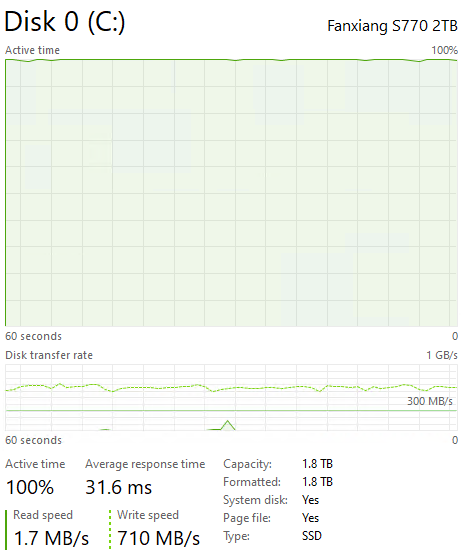
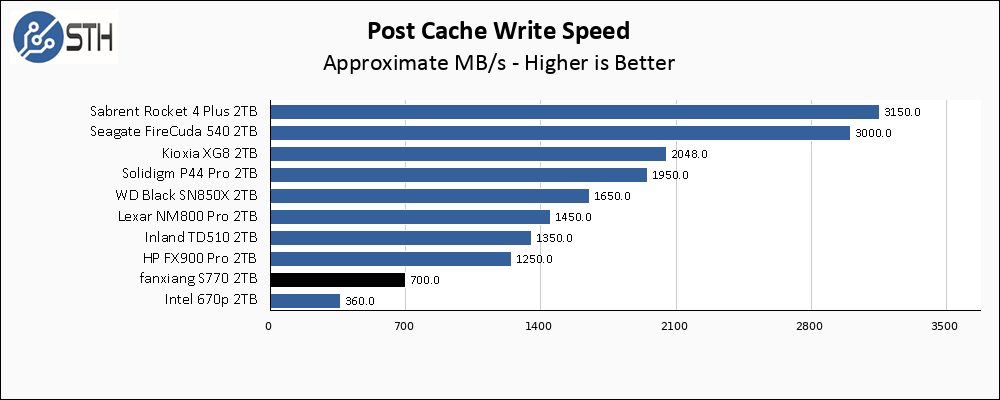
The sustained write performance out of the S770 is 700 MB/s, which is fine. Once again the S770 finds itself near the bottom of my chart, but I have to reiterate just how good most of the drives on my chart are. This is good company to keep, despite bringing up the rear.
Temperatures – A Great Asterisk
Normally we monitor the idle and maximum temperature during testing with HWMonitor to get some idea of the thermal performance and requirements of the drive. However, with the Fanxiang S770 I quickly discovered that was not possible. In brief terms, this drive lies about its thermal condition.
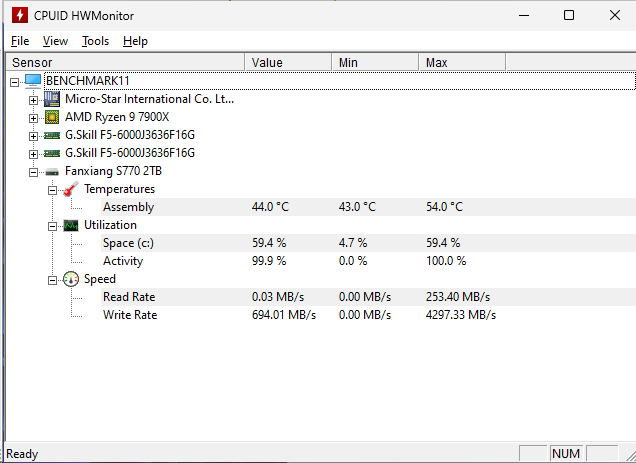
As you can see, according to HWMonitor at no point does the S770 exceed 54C during my testing. That would be an absolutely incredible result, but it was so incredible that I became suspicious of it. Out comes the FLIR thermal camera:
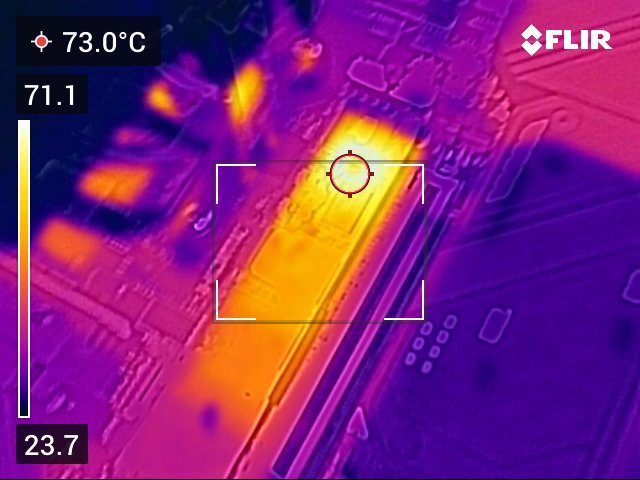
That does not look like 54C to me. There is almost always a differential between what I observe with a thermal camera and what drives self-report for thermals, with FLIR results almost always trending higher. However, those differences are typically 3-7 C, not 20+ C.
As a result, these results here are a bit of a guesstimate.

At 73 C (or hotter) under full load, the S770 might require a heatsink depending on how hard you hit it. With the drive not properly reporting its own thermal performance, nor performing any kind of throttling that I can observe, this is a drive I would recommend running with its included heatsink, or motherboard heatsink, along with some active airflow because you simply cannot trust anything coming out of the thermal monitoring of the drive.
Final Words
We purchased the Fanxiang S770 2TB box for $90, which includes a heatsink and M.2 screw. That pricing is very low, with almost all competing big-brand drives like the Crucial P5 Plus coming in at $110 or more. The S770 is the least expensive 2TB 7000 MB/s Gen4 SSD I can find.
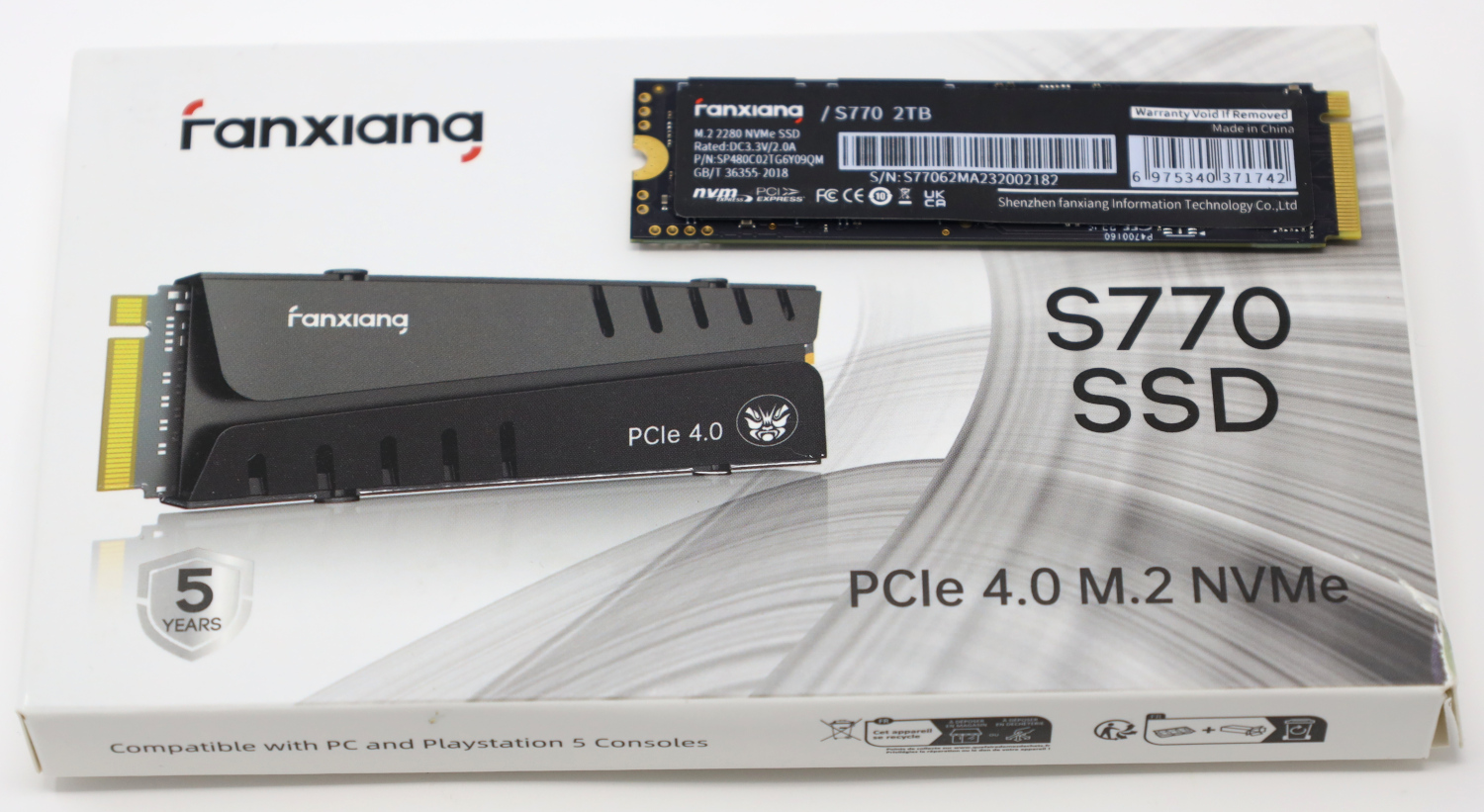
The performance of the S770 is impressive. There are only two big asterisks for me. One is the wildly inaccurate thermal reporting, and that is not a one-off problem. I actually have a Fanxiang S880 drive in for review as well – stay tuned for that one – and that drive experiences the same problem. The other big asterisk is Fanxiang itself; I certainly do not know about how their warranty process would actually go, nor do I have any information to draw from that would speak to the general reliability of this brand of drives. With that said, this drive is fast and incredibly inexpensive. For any system where performance is key but perhaps reliability is secondary – gamers, I’m talking about you here – the S770 is an option that almost anyone should consider.
Where to Buy
When we originally started seeing these drives in the STH Mini PC series, we could not find them. Then these drives were on AliExpress. Believe it or not, these are actually being sold on Amazon now. Here are affiliate links for which we may earn a small commission:



one comment:
please, put the raw values to 10hex in crystaldiskinfo. more human readable then 16 hex, which is jumbo-mumbo….make 10 hex as your default in cryataldiskinfo…
further, thanks for your effort…
@erik,
None of the values you are looking at will be particularly interesting regardless of display format, since it’s always a picture of essentially a brand new drive.
I think verifying the thermals reported by the drive with independent measurements would be useful for all SSDs. The thermals being more than reported could account for some of the inconsistencies during the testing.
Along similar lines, it would be interesting how well tools such as Linux smartctl work with each SSD and what information is actually reported.
RE temps – Jon Tanguy (Micron/Crucial) is quoted in “theregister”
” NAND, Tanguy explains, is happiest within a relatively narrow temperature band. “NAND flash actually likes to be ‘hot’ in that 60° to 70° [Celsius] range in order to program a cell because when it’s that hot, those electrons can move a little bit easier,” he explained.”
So has Fanxiang deliberately made the drive report incorrect temps ? And can they fix that remotely with a firmware update ? I have this exact drive on order from Amazon. Thanks Will for your reviews, they are very informative. Merry Christmas
I’ve bought some chinese SATA SSDs in the past that had harcoded temperatures.
I had an extremely useful comment and review and your anti-spam deleted it before it was even posted, before even sending anything, hadn’t even chose: name or email etc.. and it just detected something and erased the whole thing- congrats, you played yourself – what a great review system
2TB 90$?
Are you sure?
Can’t find in yours links that price…
Are you deleting any comments?
My comment was deleted!
my comment also not go thru
mine failed after 6 months lite use. stuck in read only .
231hrs use and 141 startups. used for gaming/internet.
still loads some of the games on it.
restarted windows after update and it was stuck in the start up screen.
Messaged via ebay fanxiang official, and after trouble shooting was offered
(nothing that i didn’t try from online help sources) a 1tb was offered to be delivered instead of the 2tb i brought..
Quote: “Hello,
Sorry for that. Because you have been using it for over six months. We considered the shipping and repairs fee, also we cannot determine whether the product issue is caused by operation or other issues. This is the best solution we can think of for you. You can consider it.Hope you can understand,thank you.Have a nice day!
Sincerely” If the ssd is genuinly delivered, it is kind of only lessens the loss, but is better than nothing i guess.
i did offer to pay to post it to them, and was open to any other suggestions.
con.. because it’s near dead weight (except it had all of my data viewable). I am curious if there are any pinouts/schematics that might hard enable a reset/delete everything.
e.g. using an external hdd to a phone charger/5w usb, and connecting e.g. pin a-b.